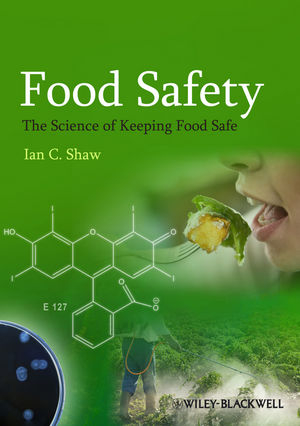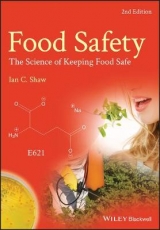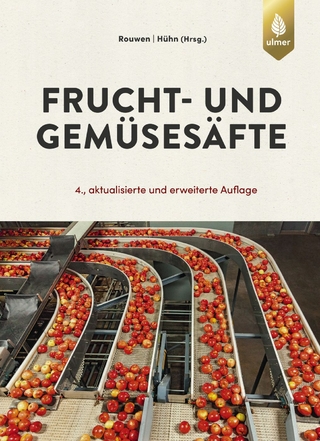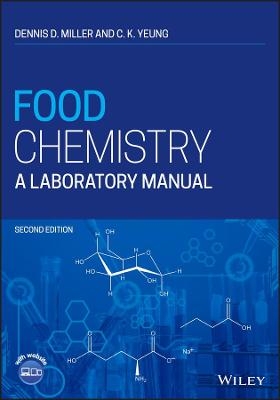
Food Safety - the Science of Keeping Food Safe
Wiley-Blackwell (an imprint of John Wiley & Sons Ltd) (Verlag)
978-1-4443-3722-8 (ISBN)
- Titel erscheint in neuer Auflage
- Artikel merken
Illustrated with photographs and examples throughout, this book is the ideal starting point for students and non-specialists seeking to learn about food safety issues, and an enjoyable and stylish read for those who already have an academic or professional background in the area.
Ian C. Shaw is Director of Biochemistry and Professor of Toxicology at the University of Canterbury, Christchurch, New Zealand. His CV includes academic positions in biochemistry, toxicology and applied biology, as well as experience as a clinical scientist and a member of various international government advisory bodies on food safety. His book Is it Safe to Eat? was made into a television series for TV New Zealand.
Preface x Acknowledgements xii 1 Introduction 1 A brief history of food safety 1 Evolution of cellular protection mechanisms 2 2 Food Risk 13 Introduction 13 What is risk? 14 Measuring hazard 16 Determining risk 18 Acceptable risk 23 Risk versus benefit 26 Risk perception 27 The precautionary principle 30 Food risk assessment 31 Relative risk and risk ranking 33 Risk management 33 Risk communication 36 Quantitative risk assessment 36 Take home messages 45 Further reading 45 3 Bacteria 46 Introduction 46 The discovery of bacteria 47 The biology of bacteria 52 The bacterial ecology of food 61 Human bacterial pathogens on food 62 Gastroenteritis 63 Food-borne pathogenic bacteria 63 Take home messages 101 Further reading 102 4 Viruses 103 Introduction 103 The discovery of viruses 103 The biology of viruses 105 Diseases caused by viruses and mechanisms of viral transmission 108 Other food-borne viruses 115 Take home messages 116 Further reading 116 5 Parasites 117 Introduction 117 What are parasites? 117 Flatworms Platyhelminthes 118 Tapeworms Cestodes 118 Flukes Trematodes 121 Nematodes 124 Protozoa 130 Take home messages 140 Further reading 140 6 Bovine Spongiform Encephalopathy (BSE) 141 Introduction 141 The history of BSE 141 The epidemiology of BSE in England 142 Spongiform encephalopathies 143 Prions 143 The symptoms of BSE 145 BSE cases in the UK 146 BSE transmission and the origins of PrP SC 146 The risk to human consumers of BSE beef nvCJD 149 The politics of BSE and implications for food safety worldwide 153 BSE incidence around the world 153 Take home messages 154 Further reading 155 7 Chemical Contaminants 156 Introduction 156 Pesticides 157 Insecticides 164 Herbicides 185 Fungicides 187 Veterinary medicines 192 Growth promoting chemicals 203 Fertilisers 208 Natural environmental chemicals 210 Non-agricultural environmental pollutants 213 Residues monitoring programmes 217 Dietary intake and risk to human consumers 218 Take home messages 219 Further reading 219 8 Natural Toxins 220 Introduction 220 Why produce natural toxins? 221 Natural toxins in the human food chain 222 Plant toxins 224 Mycotoxins 237 Phytohaemagglutinins in beans 241 Bacterial toxins 243 Phytoestrogens 243 Take home messages 243 Further reading 243 9 Endocrine Disrupting Chemicals 244 Introduction 244 The first observations of xenoestrogens effects 245 Estrogen receptors ERs 246 Molecular requirements for estrogenicity 247 Estrogens are present in both males and females 247 Xenoestrogens 248 Population level effects of exposure to xenoestrogens 261 The positive health effects of xenoestrogens 264 Take home messages 265 Further reading 265 10 Genetically Modified Food 266 Introduction 266 A brief introduction to nucleic acids, genetics and molecular biology 267 Nucleic acids 267 Converting the genetic code into a protein 268 The history of GM crops 271 The tools of the genetic engineer 272 Glyphosate-resistant crops 274 Insect-protected crops BT toxin 275 GM crops with enhanced flavour or nutritional properties 276 What happens if humans eat GM crops or foods made from them? 277 Changed biochemistry in GM crops 278 What is the effect of eating DNA and RNA? 278 GM animals 279 Take home messages 279 Further reading 279 11 Colours, Flavours and Preservatives 280 Introduction 280 Food colours 282 Flavours 290 Preservatives 305 Take home messages 319 Further reading 319 12 Food Irradiation 320 Introduction 320 Different types of radioactivity 321 How irradiation kills cells 323 The history of food irradiation 324 The effect of radiation on microorganisms 325 How is food irradiated? 326 The effects of irradiation on food chemistry 326 The effects of irradiation on vitamins 327 Radiation dose 331 Does irradiation make food radioactive? 332 Health effects of food irradiation 332 The use of food irradiation around the world 333 Take home messages 334 Further reading 334 13 Food Safety and the Unborn Child 335 Introduction 335 You are what your mother ate 335 Growth and development of the embryo and fetus 337 Effects of food chemical contaminants 344 Effects of microbiological contaminants 345 Effects on ova and sperm 346 Take home messages 347 Further reading 347 14 Organic Food 349 Introduction 349 What does organic mean? 350 The history and philosophy of organic farming 351 Demand for organic food 352 Organic farming methods 352 Organic farming legislation 353 Organic fertilisers 354 Organic pest control 355 Organic weed control 355 Animal health remedies 356 Food processing 356 Is organic food better for you? 357 Myths and facts about organic food 361 Take home messages 364 Further reading 365 15 Food Allergy 367 Introduction 367 What is an allergy? 368 The basics of immunology 368 Immunity and the immune response 368 Sensitisation 371 Food allergies 373 The genetics of allergy 373 Food allergens 374 Milk allergy 375 Peanut allergy 377 Soy allergy 380 Nut allergies 381 Seafood allergies 383 Gluten allergy (coeliac disease) 386 Allergy to eggs 389 Allergen cross-reactivity 390 Banana/latex allergy 390 Food additives allergy 392 Why is the incidence of food allergies increasing? 392 A cautionary note 393 Take home messages 393 Further reading 394 16 Food Legislation 395 Introduction 395 Legal processes how laws are made 397 A very brief history of food law 398 Food legislation around the world 399 Food legislation in the USA 399 Food legislation in the UK 402 Food legislation in New Zealand 405 Policing food legislation 407 Does food legislation reduce risks to consumers? 410 Case example non-compliance follow-up 410 The relevance of national food legislation in a global food market 411 Take home messages 412 Further reading 412 Index 413 A colour plate section falls between pages 52 and 53
| Verlagsort | Chichester |
|---|---|
| Sprache | englisch |
| Maße | 171 x 243 mm |
| Gewicht | 1 g |
| Themenwelt | Technik ► Lebensmitteltechnologie |
| Weitere Fachgebiete ► Land- / Forstwirtschaft / Fischerei | |
| ISBN-10 | 1-4443-3722-X / 144433722X |
| ISBN-13 | 978-1-4443-3722-8 / 9781444337228 |
| Zustand | Neuware |
| Haben Sie eine Frage zum Produkt? |
aus dem Bereich



